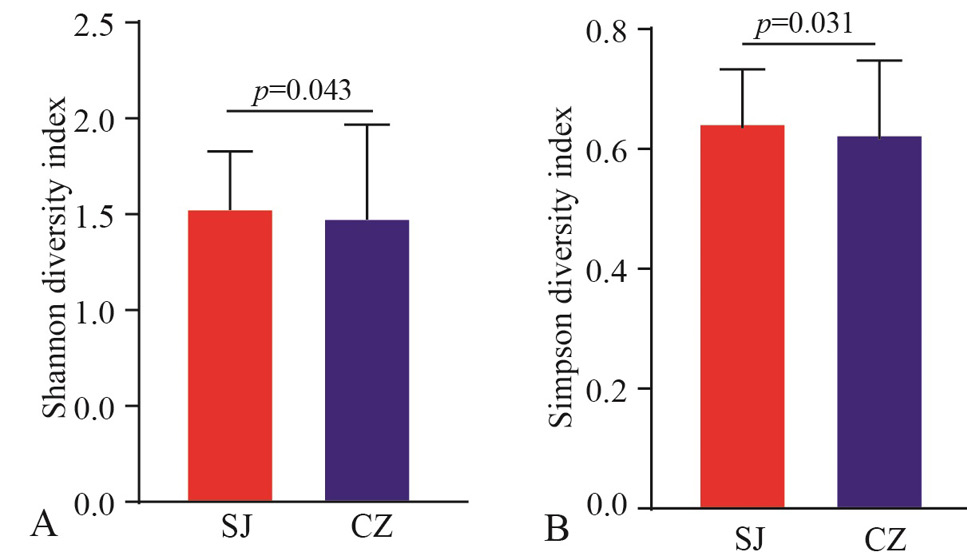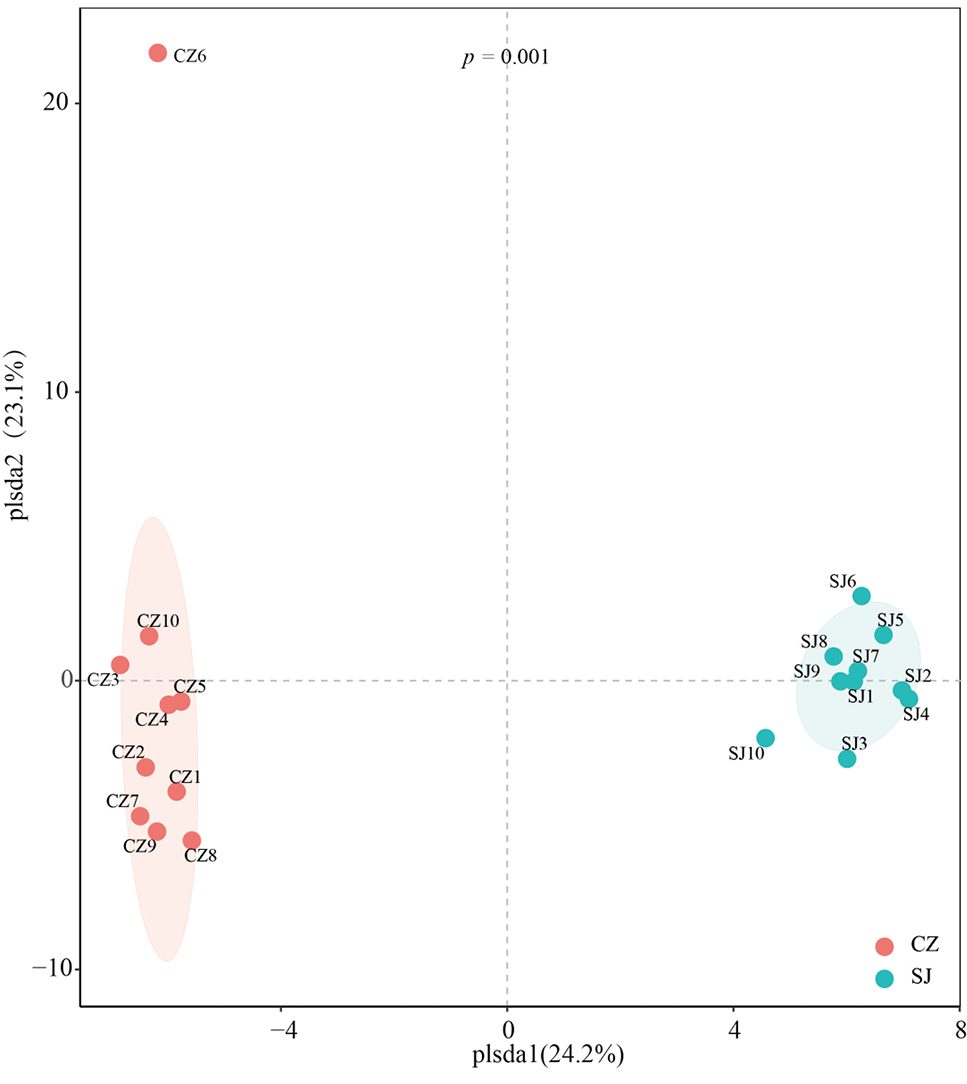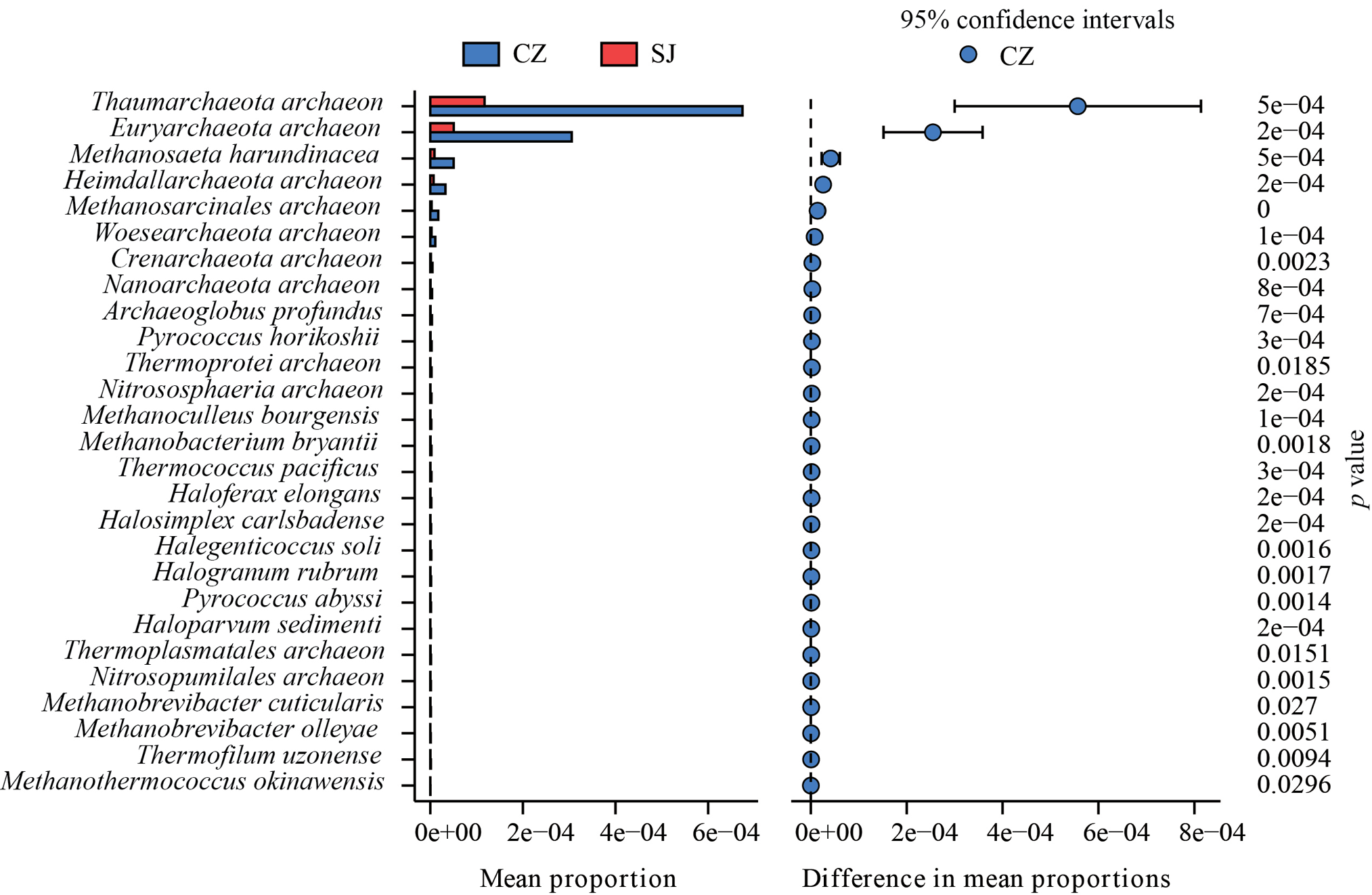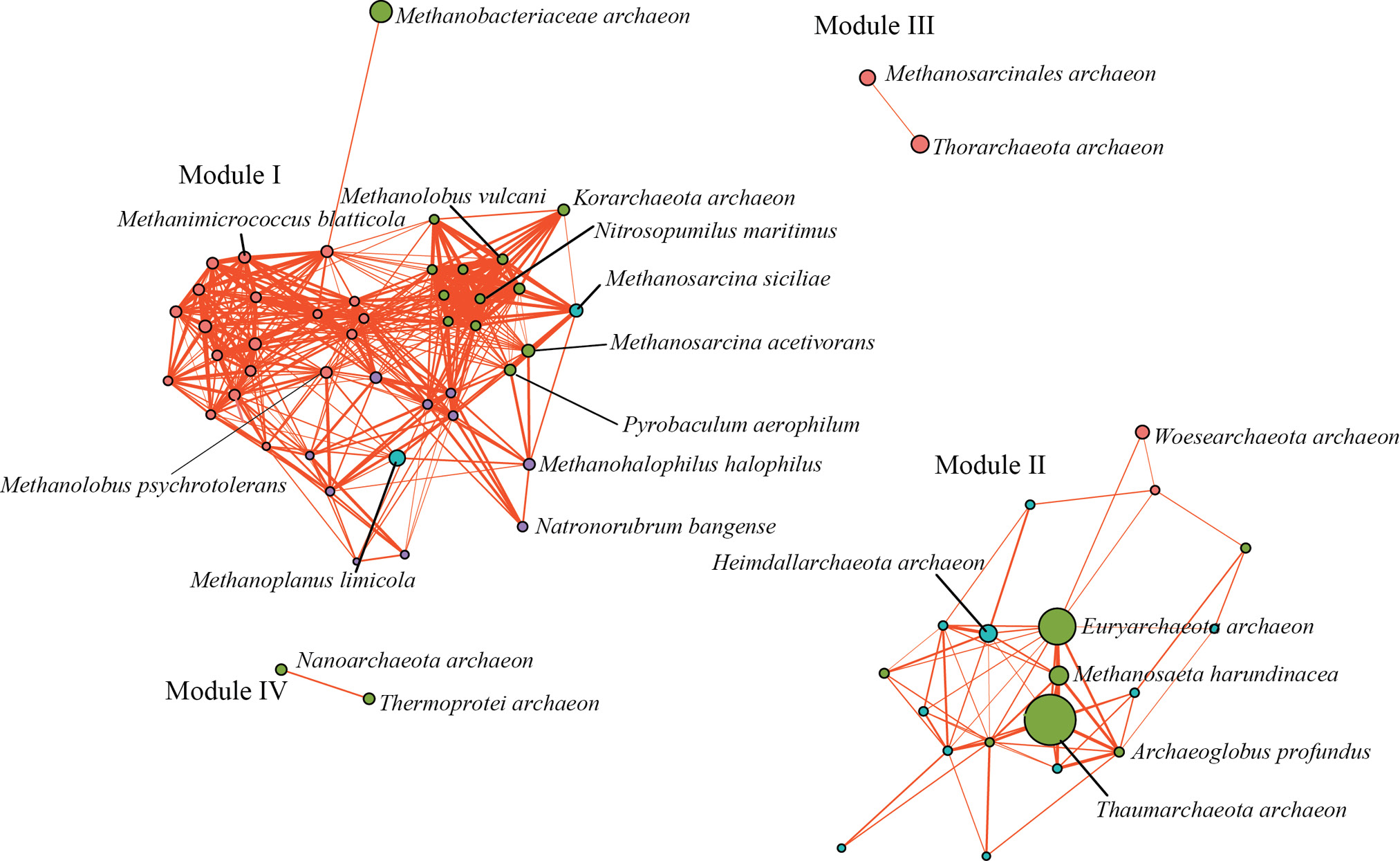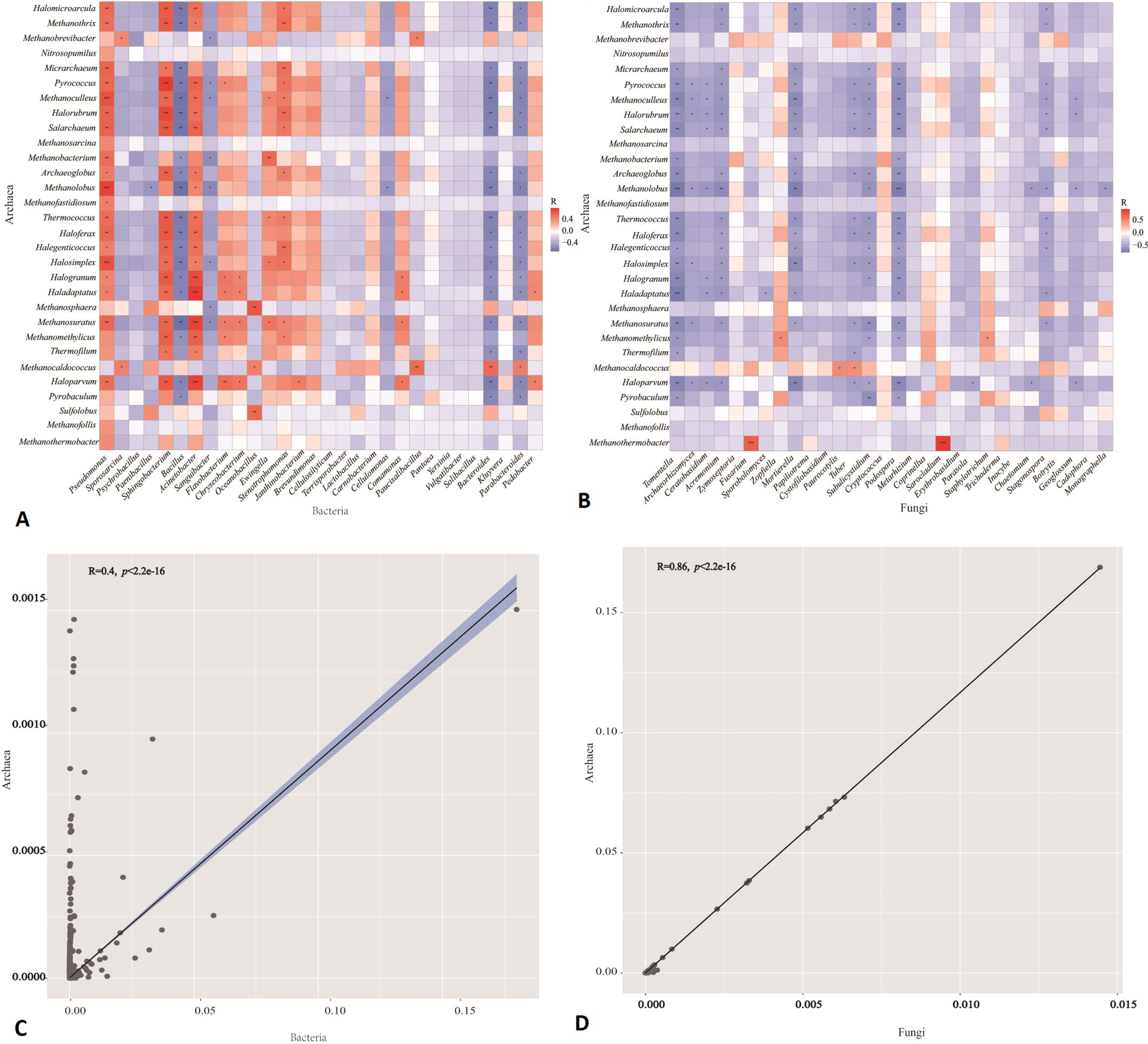Altered Gut Archaeal Communities in Anser erythropus Populations Wintering at Shengjin and Caizi Lakes in China
Altered Gut Archaeal Communities in Anser erythropus Populations Wintering at Shengjin and Caizi Lakes in China
Shaofei Zhang1, Na Xu2 and Gang Liu2*
Taxonomic analyses at the phylum (A), class (B), order (C), family (D), and genus (E) levels of the gut archaeal communities of Anser erythropus wintering at Shengjin and Caizi Lakes.
Shannon (A) and Simpson’s (B) indices of gut archaea diversity in A. erythropus overwintering at Shengjin (SJ) and Caizi (CZ) Lakes.
OPLS-DA analysis of archaea from the guts of Anser erythropus wintering at Shengjin and Caizi Lakes.
Differences in abundance of archaeal species found in the guts of Anser erythropus wintering at Shengjin and Caizi Lakes.
Results of the linear discriminant analysis effect size (LEfSe) analysis of the gut archaea communities of Anser erythropus wintering at Shengjin and Caizi Lakes.
Results of the correlation network analysis of the gut archaea communities of Anser erythropus wintering at Shengjin and Caizi Lakes.








